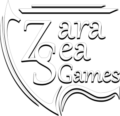Artwork
Artists and Their Need to Eat
I started playing the Dungeons and Dragons over 40 years ago. I love the artwork from the original game and the first edition of AD&D, by artists like David C Sutherland III, Errol Otus, and Dave Trampier: black and white, usually line drawings, sometimes simple, sometimes not so much. When I decided to launch this site and campaign setting, I wanted artwork that brought back the simplicity and excitement of
discovering fantasy roleplaying. Except for the covers, all the artwork in Zara Sea Games publications is in black and white, though a full-colour high resolution map can be is included in The Lost Kingdom of Gardzyka.
You can see examples of the artists’ works on the pages and publications on this site. Check out the monster illustrations on the “Creatures” page and the downloads you’ll find there. You’ll find more illustrations in The Lost Kingdom of Gardzyka and The Accursed Templom of Gyepu, which you can preview on this site. And finally (for now), you’ll be able to see lots of the work of all these artists in the forthcoming adventures.
Check out the artists’ pages, and support them directly.



The artwork used on this site and in Zara Sea publications has been commissioned for commercial use. Artists need to eat, too; please don’t reproduce these works without permission. It can get expensive commissioning artwork; at some point soon, I will need to start begging for donations to continue to fund artists. Maps have been created using Inkarnate.com, and are reproduced according to the terms of Inkarnate’s commercial use license. Where public domain works are being used under a Creative Commons license, this is clearly indicated.
Artists | Developers | Contracts
Never, ever work for free. Someone will tell you, “It will be good exposure”; I live in northern Canada – people die from exposure. Do not do work on speculation. If someone is really interested in commissioning your work, send them links to your portfolio, and let them see what you have already done. That should be enough for them to know what you can do.
Be reasonable and realistic in how much time it will take to complete a commission. Are you making minimum wage, or better yet, a living wage? Never turn over the final finished product until you have been paid in full. Personally, I recommend you never waive your “moral rights” – your right to be acknowledged as the author, and not to have your work altered or used for purposes that you do not approve. But that may be difficult, especially if you are dealing with a big developer.
If you are using artwork for anything other than personal use (including posting on social media), you need to make sure that you have the right to use it commercially. Artists will charge more for commercial use; after all, you might manage to make money off the products using your work (but don’t count on that).
I’m not an artist, so when I commission artwork, I want the artists to bring their own style and interpretation to my ideas. Why hire a professional creator if you’re not going to use their creativity? Find an artist whose style you like, and see if they’re accepting commissions. Or put out an open call on a website that artists visit, but be warned: you may be overwhelmed by the number of responses.
Whether you are an artist or a developer, please be sure you have a written agreement specifying what artwork is to be produced, what the total price will be, how and when it is to be paid, and how long the commission will take. Be sure to specify if the work is for commercial or non-commercial use.
It is weird working with an artist whom I’ve never met: at first, neither of know anything about each other. It is reasonable to pay a deposit at the beginning (usually half the total fee), and the remainder upon completion and payment of the balance. That way, both parties are protected. For a really big project, which may take months of work, you may need to work out something different. An artist who starves to death will never complete the commission.
Artists and gamers are not necessarily the best people to draw up contracts. I’ve attached the template I use, which was developed with the help of a colleague who is a professional artist. Feel free to download and modify as you see fit! Places where you need to change or add information are highlighted.
This is a downloadable Word (.docx) template. Feel free to adapt, adjust and modify as you see fit.

